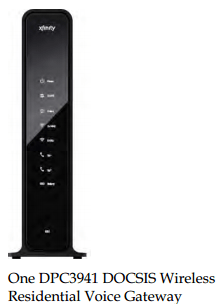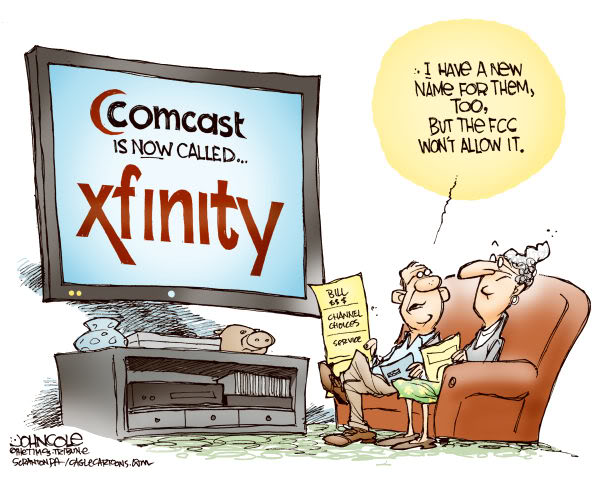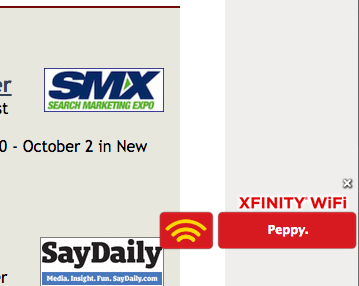 Comcast has strongly denied reports it threatened customers with service termination for using the Tor anonymous web browser, designed to obscure a web user’s identity or location.
Comcast has strongly denied reports it threatened customers with service termination for using the Tor anonymous web browser, designed to obscure a web user’s identity or location.
Over the weekend, Deep.Dot.Web reported that Comcast agents were contacting customers using the Tor web browser and warned them their Internet access was in peril if they continued using the anonymous browsing software, claiming it was against Comcast’s acceptable use policy.
Allegedly, Comcast representatives “Jeremy” and “Kelly” claimed Tor was “an illegal service” and demanded the customers reveal the web sites they were attempting to reach using the browser.
The representative identified as “Kelly” claimed:
“Users who try to use anonymity, or cover themselves up on the Internet, are usually doing things that aren’t so-to-speak legal. We have the right to terminate, fine, or suspend your account at anytime due to you violating the rules. Do you have any other questions? Thank you for contacting Comcast, have a great day.”
The Tor browser was designed to protect the identity of its privacy-minded users from nosy government agencies and law enforcement elements, but has also been used to hide illegal activities ranging from child pornography and drug dealing to murder-for-hire and espionage-related activities. But the majority of the estimated four million Tor users rely on the browser primarily to help them overcome Internet censorship blocks or geographic restrictions on online video content.
Tor directs each user’s Internet traffic through a free, worldwide, volunteer network of more than five thousand relays to hide a user’s location and usage from anyone conducting network surveillance or traffic analysis. Technically, users who volunteer to run a relay may be in violation of Comcast’s acceptable use policy, which states (in part):
[Customers may not] use or run dedicated, stand-alone equipment or servers from the Premises that provide network content or any other services to anyone outside of your Premises local area network (“PremisesLAN”), also commonly referred to as public services or servers. Examples of prohibited equipment and servers include, but are not limited to, email, web hosting, file sharing, and proxy services and servers.
 But whether the messages reported by Deep.Dot.Web were simply the result of an overeager support employee or actual company policy is now in dispute.
But whether the messages reported by Deep.Dot.Web were simply the result of an overeager support employee or actual company policy is now in dispute.
Comcast emphatically denied the customer contacts reported by Deep.Dot.Web ever took place and claimed Comcast has no restrictions on customers using the Tor browser.
“The anecdotal chat room evidence provided is not consistent with our agents’ messages and is not accurate,” said Comcast’s Charlie Douglas. “Per our own internal review, we have found no evidence that these conversations took place, nor do we employ a Security Assurance team member named Kelly. Comcast doesn’t monitor users’ browser software or web surfing, and has no program addressing the Tor browser. Customers are free to use their XFINITY Internet service to visit any website or use it however they wish.”
A company blog post this morning broadened the company’s denials:
Comcast is not asking customers to stop using Tor, or any other browser for that matter. We have no policy against Tor, or any other browser or software. Customers are free to use their Xfinity Internet service to visit any website, use any app, and so forth.
Here are the facts:
- Comcast doesn’t monitor our customer’s browser software, web surfing or online history.
- The anecdotal chat room evidence described in these reports is not accurate.
- We respect customer privacy and security and only investigate and disclose certain information about a customer’s account with a valid court order or other appropriate legal process, just like other ISPs. More information about these policies can be found in our Transparency Report here.
- We do not terminate customers for violating the Copyright Alert System (aka “six strikes”), which is a non-punitive, educational and voluntary copyright program. Read more here.


 Subscribe
Subscribe In an effort to keep up with increasing bandwidth demands on customers’ home networks, Comcast has
In an effort to keep up with increasing bandwidth demands on customers’ home networks, Comcast has  If regulators believe they can turn Comcast and Time Warner Cable’s mega-merger into a consumer-friendly deal in the public interest, they are ignoring history.
If regulators believe they can turn Comcast and Time Warner Cable’s mega-merger into a consumer-friendly deal in the public interest, they are ignoring history.

